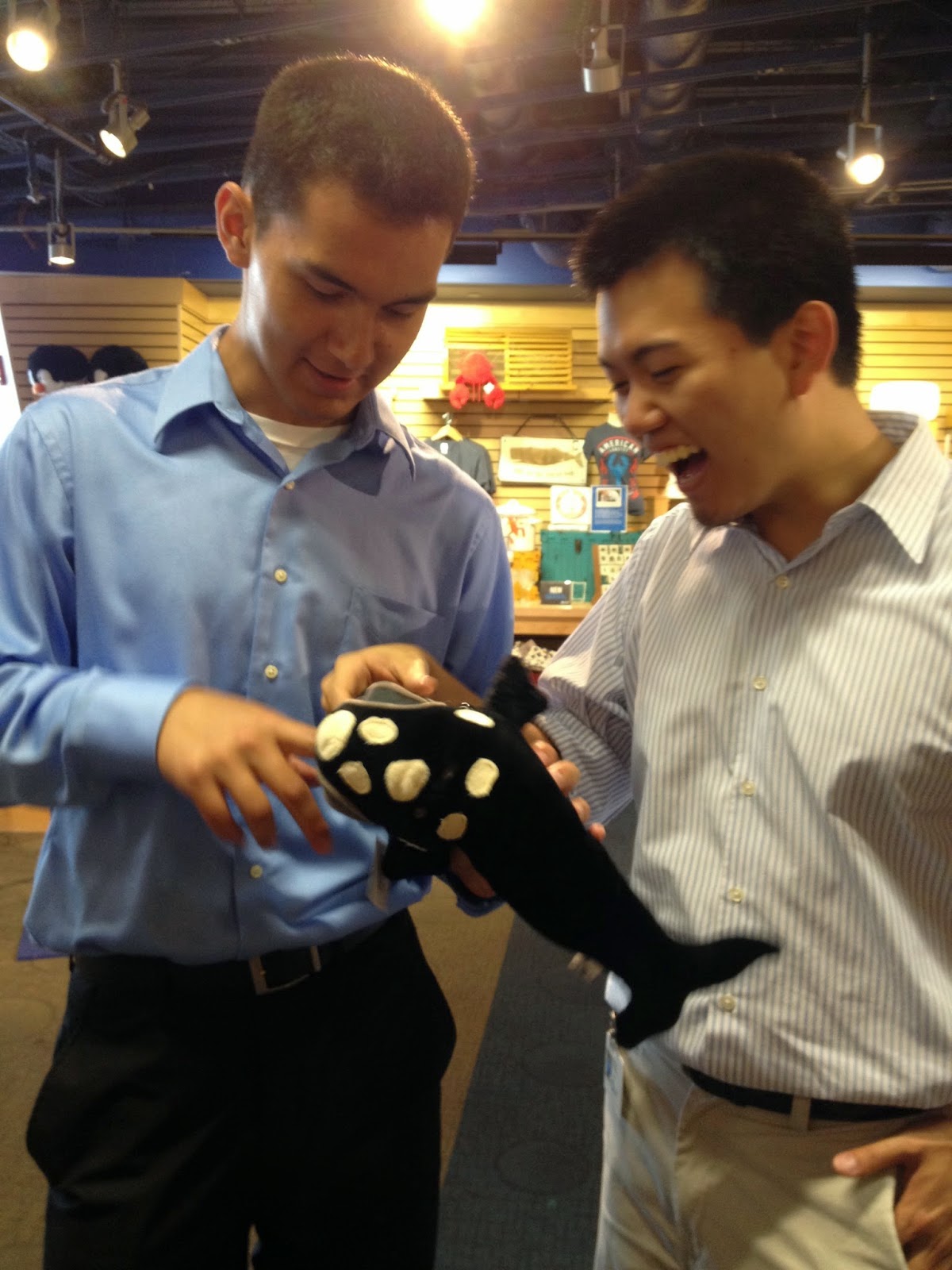September 18, 2014
Our morning drive to Maine
Today, we spent our day lobster fishing. We took plenty of photos, observed the process of trapping lobsters, and spent much time speaking with the lobster fisherman, our guide.
Lobster Traps
As we spoke with him, we began to realize the complexity of the conflicts between environmental groups and fishermen. Fishermen love whales and would hate to see any entanglements, and they abide by all of the regulations, however costly. To the fishermen, these regulations may seem to come out of nowhere. Fishermen try to get involved so that regulations can be made with safety and the lobster industry in mind. The potential safety hazard that some of the regulations pose creates a difficult conflict.
Whales still end up entangled. Assuming that the regulations are all followed, then there must be some other reason for the entanglement rate. Perhaps the juveniles require weaker links? If the adults are more able to break free of ropes but juveniles are not, then the juveniles are more likely to become documented as entangled while the adults simply break their ropes. What if this is the reason that juveniles make up 51.4% of serious entanglements, even though they only make up around 28% of the right whale population?
Link designed to break at around 600lb (light blue, center)
In addition, the rule regarding sinking groundlines results in a large number of lost lobster pots ("ghosts"), which must have negative effects on the underground environment and the financial state of lobster fishermen. These rules each have their drawbacks.
However, rules like the multiple-trap-per-trawl rule do not seem to complicate the work of lobstermen, since many of them often use multiple traps anyway. This rule took into account the fishermen, which created exceptions around certain islands.
Similar to this, I hope that our storyline can take into account lobster fishermen, environmental groups, and all of the other key players.
With all of the complexities of our project, we hope to deliver a solution that portrays the true nature of the entanglement and ship strike problem. The main takeaway of our storyline will be an understanding of what everyone can do to help conserve North Atlantic right whales, so whether the person playing the video game is a fisherman, an environmental activist, a scientist, or common citizen, that person would understand what they can do.
Thanks for reading!
Alex Helderman
P.S.
Something I have been pondering: Juveniles who become entangled do not seem to learn to avoid ropes. Why don't whales learn to avoid what causes them so much pain? Why don't they avoid lines and ships, if they can see or hear (in the case of the ships) them coming? Are they just curious? I am not saying that it is the whale's fault, but I am saying that if we can figure out a way to repel them from lines and ships (besides pingers), then we could make a greater difference.





























